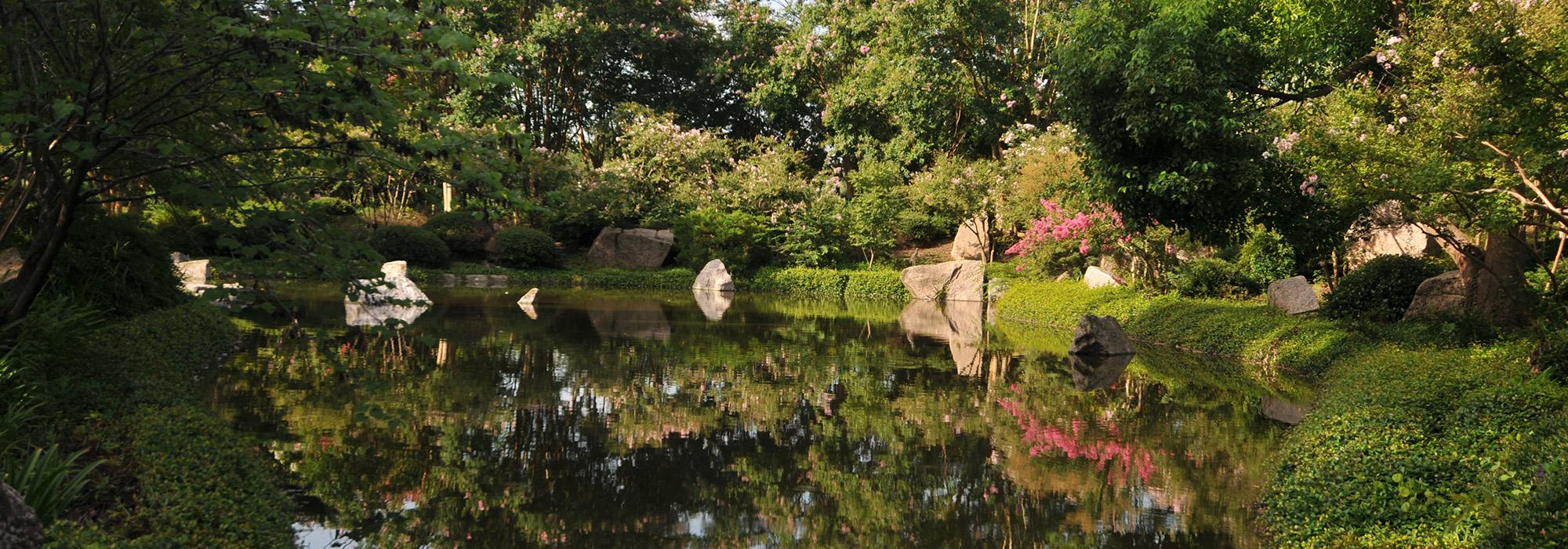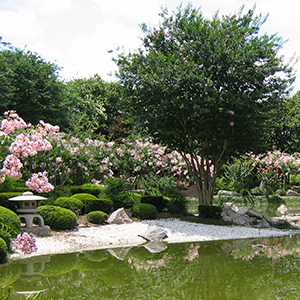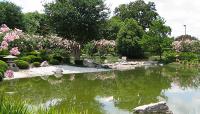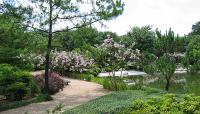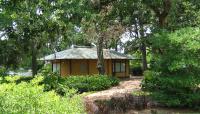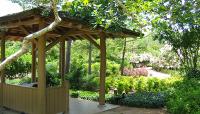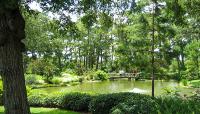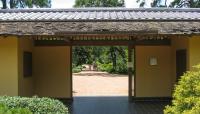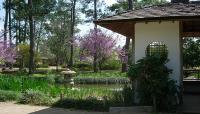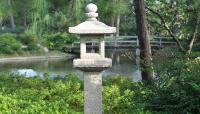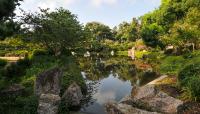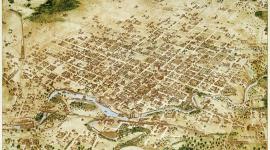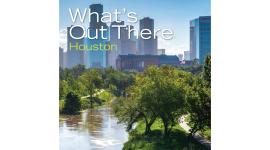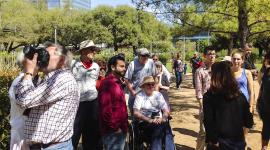Occupying a 5.5-acre section in the northwest quadrant of Hermann Park, this strolling garden was opened in 1992. Although Hare & Hare’s plan for Hermann Park, published in 1930, indicated that a “Japanese Garden” should be developed near Grand Basin (now McGovern Lake), six decades would pass before the suggestion was realized. The prime minister of Japan visited Houston in 1990, and donated a traditional teahouse to the City one year later. Preserving an existing pine grove at the water’s edge, landscape architect Takeshi “Ken” Nakajima designed the garden to serve as the setting for the teahouse. Local landscape architect Lauren Griffith selected native plants that would thrive in Houston’s climate.
Drawing from seventeenth-century traditions, the garden comprises sculpted plantings, interconnected lakes, and Japanese structures, as well as vantage points that capitalize on borrowed scenery. A network of gravel paths traverses the undulating topography to reveal the garden as a sequence. Other elements include a waterfall carved into pink granite, yukimi lanterns (short stone lanterns with broad caps positioned near water features), a traditional entrance gate, and large boulders sandblasted with calligraphy providing a welcome message. Specimen trees such as flowering dogwood, Japanese maple, crape myrtle, red bud, and cherry are interspersed amidst oak and pine and complemented by iris, azalea, and camellia. In 2006, landscape architect Terunobu Nakai and gardener Hiroshi Iwasaki updated the garden (based on Nakajima’s original drawings) and provided training for the volunteers who maintain the delicately pruned plants. The Japanese government gave twenty cherry trees to Hermann Park in 2012, on the centennial of its earlier gift of cherries (planted in Washington, D.C.) to the United States.



